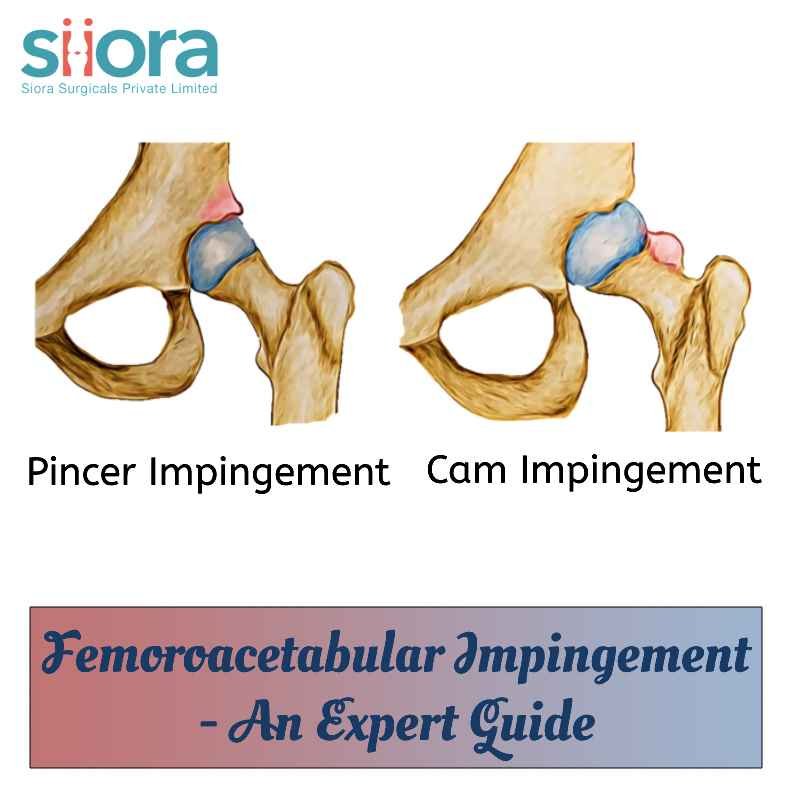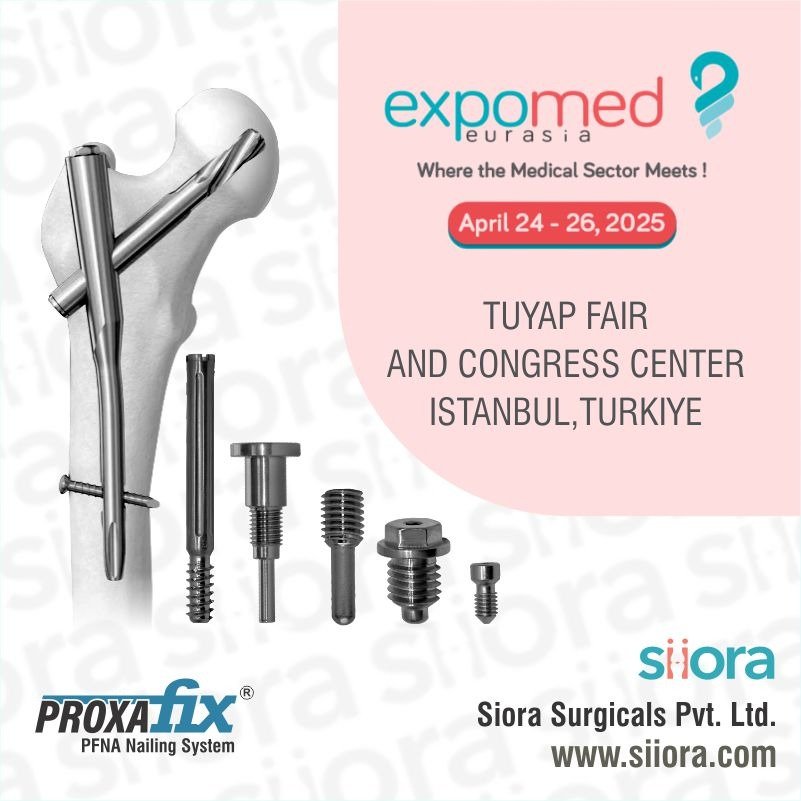Our hip joint is among the most used joints in the body. It is involved in many lower body movements that we perform in our day-to-day lives. It is a type of ball and socket synovial joint that allows a good range of motion to our hips and legs. Certain activities and daily stress can lead to several hip joint problems out of which Femoroacetabular Impingement (FAI) is one. In this post, we will be talking about this condition in detail.
The hip joint comprises the femoral head which serves as the ball and the acetabulum which serves as the socket. This anatomy of the joint makes the hip joint the ball and socket joint. Now, when it comes to FAI, it disrupts the normal anatomy of the joint and causes pain. Let us now have a brief introduction to the condition.
What is Femoroacetabular Impingement?
Femoroacetabular impingement (FAI) is a medical condition that affects the hip joint, causing pain and limited range of motion. It occurs when there is abnormal contact between the femoral head (the ball-shaped end of the thigh bone) and the acetabulum (the socket in the pelvic bone).
This condition can cause pain while affecting the range of motion. It is very important to address and diagnose the condition early. If delayed, it can result in damage to the cartilage and labrum. Over time, painful joint deterioration and arthritis may develop. In severe cases, surgical intervention may be necessary for the treatment.
What Are the Types of Femoroacetabular Impingement?
FAI can be categorized into two main types, cam impingement, and pincer impingement. The third type is called combined where both cam and pincer impingements are noticed. Let us have a detailed look at these:
Cam Impingement
This type occurs when there is an abnormal shape of the femoral head or neck, resulting in a non-spherical ball that does not fit properly into the acetabulum. It often leads to restricted hip motion and can cause damage to the cartilage and labrum.
Pincer Impingement
Pincer impingement occurs when there is excessive coverage or overgrowth of the acetabulum. This can cause the labrum to be pinched between the femoral head and the acetabulum, resulting in pain and cartilage damage.
Combined impingement
This type of FAI involves a combination of both cam and pincer impingement. It can occur when there are abnormalities in both the femoral head/neck and the acetabulum. Combined impingement often results in more severe symptoms and can increase the risk of hip joint degeneration.
Diagnosing the specific type of FAI is important to get the right treatment and alleviate symptoms associated with the condition. Any delay will only make the condition worse and increase the chances of the need for surgery.
What Causes Femoroacetabular Impingement?
There could be several factors that can contribute to Femoroacetabular Impingement. Here are some of the most common ones:
Developmental factors
FAI can be because of abnormalities that occur during the development of the hip joint. For example, during adolescence, the femoral head and acetabulum may not form properly, leading to irregular shapes that do not fit together correctly. This can result in cam impingement or pincer impingement.
Genetic factors
Some individuals may have a genetic predisposition to developing FAI. Certain gene variations have been associated with an increased risk of hip joint abnormalities and impingement.
Hip dysplasia
Hip dysplasia is a condition where the hip socket (acetabulum) is shallow or improperly formed. This can result in increased stress on the joint, leading to FAI.
Overuse or repetitive motions
Activities that involve repetitive hip movements, such as sports or occupations that require frequent squatting or hip flexion, can contribute to the development of FAI. Over time, these repetitive motions can cause wear and tear on the hip joint, leading to impingement.
Previous hip injuries or trauma
Injuries to the hip joint, such as fractures, dislocations, or labral tears, can disrupt the normal anatomy of the joint and increase the risk of FAI.
Structural abnormalities
Structural abnormalities in the femoral head, neck, or acetabulum can contribute to FAI. These abnormalities can include extra bone growth (osteophytes), misshapen femoral head or neck, or excessive coverage or overgrowth of the acetabulum.
It’s important to note that FAI can also occur as a combination of these factors. The presence of one or more of these causes can increase the likelihood of developing FAI. It’s essential to consult with a healthcare professional, such as an orthopedic specialist, for an accurate diagnosis and appropriate management of FAI.
What is the Diagnosis for Femoroacetabular Impingement?
Diagnosing femoroacetabular impingement (FAI) involves a comprehensive evaluation that includes a combination of medical history, physical examination, and imaging studies. Here are the key aspects of diagnosing FAI:
Medical history
The doctor will inquire about the patient’s symptoms, such as hip pain, stiffness, or limited range of motion. They will also ask about any previous hip injuries, trauma, or family history of hip conditions.
Physical examination
The doctor will perform a thorough physical examination to assess the range of motion of the hip, joint stability, and any signs of impingement. They may use special tests, such as the impingement test, to reproduce symptoms and evaluate the hip joint’s response.
Imaging studies
X-rays help evaluate the hip joint’s bony structures and detect any abnormalities that occur because of FAI. X-rays can help identify the presence of cam deformities (asphericity of the femoral head or neck) or pincer deformities (excessive acetabular coverage). Magnetic resonance imaging (MRI) scans may also be ordered to assess the condition of soft tissues, such as the labrum and cartilage, and to rule out other hip conditions.
Diagnostic injections
In some cases, diagnostic injections may be utilized to confirm the source of pain and impingement. An intra-articular injection of local anesthetic and/or corticosteroids can help temporarily alleviate symptoms, indicating that the pain originates from the hip joint.
Arthroscopy
In certain cases where the diagnosis is uncertain or when surgical intervention is being considered, a diagnostic hip arthroscopy may be performed. During this minimally invasive procedure, a small camera is inserted into the hip joint to visualize the structures directly, allowing for a more accurate diagnosis.
It’s crucial to consult with a healthcare professional, such as an orthopedic specialist or sports medicine physician, for an accurate diagnosis of FAI. They will evaluate the individual’s symptoms, medical history, and imaging results to determine the presence and severity of FAI. A precise diagnosis is essential for developing an appropriate treatment plan tailored to the patient’s needs.
What Are the Symptoms of Femoroacetabular Impingement (FAI)?
Femoroacetabular impingement (FAI) can cause a variety of symptoms related to the hip joint. The symptoms experienced can vary depending on the type and severity of impingement. Here are common symptoms:
Hip pain
Persistent or intermittent pain in the hip joint is a primary symptom of FAI. The patient may feel pain in the groin, outer hip, or deep within the joint. It can worsen with activity, prolonged sitting, or movements that involve flexing or rotating the hip.
Limited range of motion
Individuals with FAI may experience a reduced ability to move their hip joint freely. Activities like squatting, sitting cross-legged, or performing deep hip flexion can be particularly challenging.
Hip stiffness
FAI can lead to a feeling of stiffness in the hip joint, making it difficult to initiate movements or perform activities requiring hip mobility.
Clicking or catching sensation
Some individuals with FAI may experience a clicking or catching sensation in the hip joint during certain movements. This may be due to the abnormal contact between the femoral head and the acetabulum.
Radiating pain
In some cases, the pain associated with FAI may radiate to the buttocks, thigh, or knee.
Hip instability
FAI can contribute to hip joint instability, causing a sense of looseness or a feeling that the hip may “give way” during movement.
It’s important to note that not all individuals with FAI experience symptoms. Some individuals may have radiographic evidence of impingement without significant pain or functional limitations. If you suspect you have FAI or are experiencing hip-related symptoms, it is advisable to consult with a healthcare professional for a proper evaluation and diagnosis.
What is the Treatment for Femoroacetabular Impingement?
The treatment of femoroacetabular impingement (FAI) typically involves a combination of conservative measures and, in some cases, surgical intervention. The treatment approach depends on the severity of symptoms, functional limitations, and the presence of hip joint damage. Here are the common treatment options for FAI:
Conservative measures
Activity modification
Avoiding or modifying activities that exacerbate symptoms, such as avoiding deep squats or high-impact sports.
Physical therapy
A tailored exercise program focused on strengthening the hip muscles, improving the range of motion, and correcting movement patterns. It can also include manual therapy techniques to reduce pain and improve joint mobility.
Nonsteroidal anti-inflammatory drugs (NSAIDs)
Medications such as ibuprofen or naproxen can help alleviate pain and reduce inflammation.
Intra-articular injections
Corticosteroid injections
These can provide temporary relief from pain and inflammation in the hip joint. They are often the option when conservative measures are insufficient.
Surgical intervention
Arthroscopic surgery
In cases where conservative treatments fail to relieve symptoms or when there is significant hip joint damage, arthroscopic surgery may be recommended. During this procedure, the surgeon uses small incisions and a camera to access the hip joint, remove any bone spurs or excess bone, repair labral tears, and correct the structural abnormalities causing impingement.
Open surgery
In some cases, open surgery may be necessary, especially when there are extensive bone deformities or complex anatomical issues. This involves a larger incision and allows for more extensive access to the hip joint.
The choice of surgical approach depends on various factors and is typically determined by the surgeon’s expertise and the specific needs of the patient.
It is crucial to consult with a healthcare professional, such as an orthopedic surgeon or a sports medicine specialist, for a thorough evaluation and to discuss the most appropriate treatment options for FAI. They will consider factors such as the individual’s age, activity level, severity of symptoms, and imaging findings to develop a personalized treatment plan.
Siora Surgicals Pvt. Ltd. is a leading orthopedic implants manufacturer in India. The company is operating for over 3 decades and has served clients in over 40 countries. Siora also keeps looking to expand its international market reach by searching for distributors in different countries. The company manufactures a CE-certified range of orthopedic implants and instruments. All the products are made in Siora’s production facility established in the RAI district, Sonepat, Haryana. It is also known as a renowned OEM/contract manufacturing service provider across the globe.








